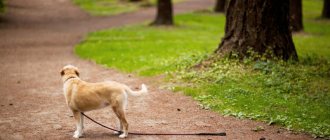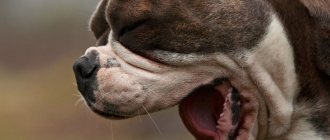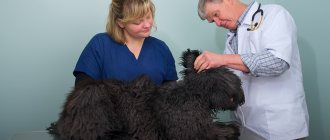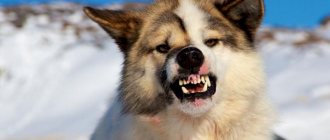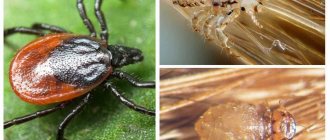Everyone knows the statement that a dog is a man's friend. But there are also situations when dogs attack people. In addition, sometimes they attack each other; both children and adults can witness such incidents. Many people think that the dog attacks suddenly, for no apparent reason. However, as a rule, this is not true. If a dog attacks, what to do in this situation, how to react to the attack, will prompt you to understand the reasons for its behavior and take the necessary measures.
What dog breeds are the most dangerous?
Dog attacks are most frightening to people who are initially afraid of them. For people with phobias, it is not so important how balanced the dog is and what the chances of an attack are. It is the prospect of an attack that frightens, so a person is afraid in advance.
The media regularly publish information about which dog breeds are the most dangerous, how to protect yourself from four-legged animals, and complain about lawlessness in matters of regulating relations between animals and people.
Statistically, the German Shepherd is considered the most dangerous dog breed. In statistical calculations, similar dogs are considered aggressors. Since the German Shepherd is a very popular breed, every year unscrupulous owners throw thousands of mixed-breed puppies onto the streets, which run wild and can attack people.
Note! Fighting breed dogs rarely attack people. Moreover, upon detailed analysis of the information, it turns out that the attacking dogs were trained in skills that are not characteristic of them.
Causes of dog attacks
The media is silent about important nuances and reasons for dog attacks that you need to know about:
- Most often it is not street dogs that attack, but domestic dogs. Four-legged animals that grew up on the street are afraid of people and try to avoid them.
- The attack is carried out by a pack.
- Not all dogs in a pack attack with the same intensity - there is a leader in the pack that the rest look up to.
- Packs led by bitches (females) are more dangerous.
- A flock can attack for two main reasons: trespassing and hunger.
The uncontrolled reproduction of street dogs and the irresponsible attitude of owners are the main reasons why you see packs on the streets.
Hunger makes dogs angrier. In large cities, where dogs have extensive food supplies, attacks are extremely rare. Most often, dogs attack in small settlements with a small number of inhabitants, northern cities and on the outskirts of large cities. In all of the above situations, the cause of the attack may be
Protecting your own territory. No one is surprised by the news that a dog attacked a thief who broke into the yard. Street dogs also protect their own territory, the problem is that no one knows its boundaries.
World statistics show that most dog attacks on people, and in particular children, are associated with provocations. Children do not understand the threat, seeing dogs only as objects of adoration. Street dogs are distrustful and view children as a threat. If a child hurts the dog or behaves in a threatening manner, the dog attacks.
The next record holders who suffered from dog attacks are drunk people. Dogs do not like drunk people and attacks in these cases are dictated by defensive instincts.
What absolutely should not be done
The dog doesn’t poop: what to do if it hasn’t gone to the toilet for a day
There is a fairly extensive list of what not to do if you are attacked by a dog.
A way to disorient an animal
For self-defense purposes, every person should familiarize themselves with it:
- make attempts to find a common language with the animal. It’s definitely not possible to come to an agreement with him. It is necessary, on the contrary, to avoid any direct contact;
- If a person decides to throw any object at a dog, then there is no need to do this purposefully into the dog’s mouth. The essence of protection is for the dog to attack the object itself, and this is precious time during which the person can escape;
- You cannot shout at the animal or throw stones at it, this will only increase aggression. If possible, it is recommended to throw something over the animal’s eyes; it will disorientate it.
Important! If a person understands that there is no other way out and he has to accept a fight, he needs to be as aggressive as possible. It is quite possible that the dog will become confused or frightened, from which it will retreat.
How to recognize and prevent a threat in time
Whether you're a dog lover or not, it's important to understand how to recognize and prevent threats.
- You see a pack of dogs resting - go around it.
- If you encounter a dog that is showing signs of aggression, stop moving in its direction, step back without turning your back to the dog, and go around it.
- The dog reacted aggressively to a bag or other object in your hands; the easiest way is to throw it on the ground and move away without turning your back to the dog.
- For any type of aggression and underlying factors, try to keep your palms open and visible. Most dogs do not dare to attack unless they are truly in danger.
External signs that show unfriendly behavior in a dog:
- Grinning and growling are signs that can indicate both a threat and an attempt to defend oneself.
- The tail is extended along the body and the hind legs are lowered - a pose that shows that the dog is ready to attack, but has not made a final decision.
- Raised hair on the withers indicates increased excitement, which can prevent the dog from making an informed decision.
- A grin and frequent licking of the muzzle without growling is the most obvious sign of aggression and a possible attack, especially if there is a child next to the dog.
Even when the dog starts an attack, clicks its teeth and moves towards you, there is a chance to avoid direct conflict. The main principles are calm behavior and control of movements. Most dogs will attack a person until they realize that the intruder is ready to surrender without a fight and leave the area.
To help your dog calm down, follow these rules:
- Freeze, do not try to run away and do not turn your back to the dog.
- Keep your arms close to your body, palms open and facing your dog.
- Don't say anything.
- Don't look the dog in the eye, keep it in your peripheral vision and try to look at the ground.
- Once the dog relaxes and calms down a little, slowly move your back back.
The above algorithm works both with flocks and with individuals. If necessary, repeat the above instructions several times. Move a long distance away and remain calm.
Important! You can only turn your back to the dog when he is distracted, walks away, starts sniffing, etc.
Behavior rules
When passing dogs, even if they look good-natured, you should not look them in the eyes, smile, run or wave your arms. Often, to stop the animal, commands are triggered - “Ugh!”, “Back!”, “Place!”, pronounced in a confident and clear voice. The dog should not see you as a victim.
Even if you know each other well, you should not approach the dog or its owner from behind, especially when it is dark outside. As a greeting, do not use movements that the dog may perceive as a sign of hostility towards its owner.
Don't pet someone else's dog without permission. It is strictly not recommended to touch the animal while sleeping or eating.
Procedure in case of a dog attack
The following dog attack procedure will only work if the dog attacks alone.
- Remain as calm as possible. When you are afraid, adrenaline enters your bloodstream. Unlike humans, dogs are highly sensitive to changes in body odor. With a massive release of adrenaline, your sweat smell changes, which reveals your fear. Nobody says you have to be calm as a rock (it's impossible), but control your emotions as much as possible.
- If a dog attacks frontally (face to face), the easiest way to defend yourself is with your hands. Do not try to kick the dog, as it is more beneficial for you when the dog tries to jump and attack the upper body. If the dog begins to grab your legs, there is a high probability of falling to the ground, in which case you will be at a severe disadvantage.
- Don't make loud noises. This condition applies only to those cases when the dog is in doubt about whether to attack or not. If the attack has already occurred, your task is to make threatening sounds. Firstly, your scream will attract people, and secondly, it will make the dog doubt your defenselessness.
- When a dog attacks, it is not recommended to grab or hold it by the withers. Your task is to fight back and force the dog to retreat. Grabbing the dog will not make the situation any easier, but will only cause additional injury.
- It is more difficult if the dog attacks unexpectedly, from behind. Small dogs, which are not capable of causing serious damage, but can bite a leg, are more prone to attacks from the back. In this case, I advise you to take advantage of the obvious superiority - large dimensions. Turn to the attacker and begin to quickly move forward, stomp, shout, wave your arms, behave as threateningly and defiantly as possible. The dog's self-preservation instinct will kick in and it will retreat.
Fall after dog attack
The worst thing is when a dog manages to knock a person down and throw him to the ground. In such a situation, it is very difficult to give any advice, and self-defense means will no longer help, because the person begins to act instinctively, reflexively taking a position in which he will receive the least amount of damage. The resulting shock prevents you from thinking and acting constructively. Still, try to pull yourself together in such a situation. And remember, if a dog attacks, what to do after the fall:
- swinging your arms and legs, try to hit the dog in the nose;
- Protect your neck from fighting and hide it;
- if the dog moves rather slowly, grab it by the ears, or even better, throw it to the ground yourself and start choking it;
- in the most extreme cases, both the person being attacked and the police have the right to kill the animal.
The worst option is an attempt to attack by a pack of dogs. But here it is important not to panic and drive away at least one of the pack, thereby showing the others that you are stronger. And the attack will be avoided.
Self-defense when attacked by a pack
Fatal dog attacks are most often associated with pack attacks. Self-defense when attacked by a pack, taking into account the lack of experience and the degree of fear, is a very difficult task.
- Don't let dogs attack from behind. Don't try to fight all the dogs at once. If you have a bag, keys, or any objects in your pockets, throw them to the ground or backhand them in any direction. Sharp gestures and flying objects help dogs lose their attention.
- To protect your back, you need to back away to a wall, any building, or a tree. During an attack, the most active dog is the leader, so keep him in sight at all times, but avoid direct eye contact.
- It is almost impossible to fight off a pack of dogs with a stick or other improvised objects. The best method of defense is to put up a shield. Even if you only have a stick at hand, hold it in front of you and hit only if the dog has jumped.
- If a pack attacks, you will receive minimal injuries if you starve the dogs out. A dog attack is accompanied by the so-called game - a state in which the dog is not aware of its own actions. The game subdues the dog for a short time, so it is in your interests to maintain passive defense for as long as possible.
Let yourself be bitten: How to protect yourself from an aggressive dog
According to statistics, dogs attack people about five times more often than robbers. Tsargrad collected expert advice on how to behave with such aggressive animals
Confuse commands
Emergency Situations Ministry specialists have posted on their website recommendations regarding a person’s behavior in a situation where he is about to be attacked by a clearly aggressive dog. The authors of the memo believe that it is necessary to stop and give the animal some standard command such as “Place!”, “Stop!” or “Sit!” According to them, a series of such commands can lead to confusion for the dog as it becomes confused.
If verbal weapons do not help and the animal is still belligerent, various objects that you may have at hand, depending on the situation, will help protect against it. For example, an umbrella, sticks or stones. It is necessary to look around, find a potential shelter and gradually retreat to it, while simultaneously calling people for help.
If you feel that the bite is a matter of a few seconds, it is recommended to take off your outer clothing (raincoat, jacket, jacket, etc.) and wrap it around your hand for protection. The purpose of this manipulation is to deliberately provoke the dog to bite. When she tries to do this, you need to hit her on the upper jaw - along with the nose, tongue and groin area, these are the places where the dog has pain points.
Bitten by a dog - call an ambulance
The Ministry of Emergency Situations also described the procedure for action in the event that a bite does occur. The department's statement notes that it is imperative to wash the wound with hydrogen peroxide or plenty of warm water and soap. The edges of the wound should be treated with iodine, and a clean bandage should be applied on top. In any case, you need to go to the emergency room, since the steps described above are only first aid. In addition, in a medical institution, the injuries received will be documented; later they will be needed when communicating with law enforcement agencies. If necessary, call an ambulance.
Rescuers also point out that if you know who owns the dog that bit you, you need to provide the exact address of the owner. Of course, sanitary services must also be notified about the incident - the dog must be checked for rabies.
Tips from dog handlers
However, not all of these recommendations were appreciated by dog handlers. In particular, the ex-president of the Russian Cynological Federation, Alexander Inshakov, called the likelihood that the teams will help stop the attacking dog is very low. According to him, the animal may simply not know them. And even a firm voice or the word “no” will not help here. However, the expert did not offer any alternative in his commentary to RBC.
If a dog bites you, call an ambulance. Photo: Konstantin Kokoshkin/Globallookpress
The President of the Union of Cynological Organizations of Russia, Vladimir Urazhevsky, proposed several more ways to protect against angry dogs. For example, spray the contents of a pepper spray. In the absence of such a “weapon”, you can use any perfume. As you know, dogs’ sense of smell is much more sensitive than that of humans, so for them such a smell will be sharp and, most likely, unpleasant. According to the specialist, an umbrella can really come in handy. Its sudden opening towards the dog will most likely frighten it.
Urazhevsky also noted that if you have something in your hands, for example, bags with any contents, you can raise your hands up. For an animal, this will be the equivalent of increasing your size.
A dog can be scared. All dogs judge size,
- the expert added. According to him, the dogs will not attack anything large.
It is also important to understand what not to do. Under no circumstances should you allow your dog to come behind you. Try to make sure there is a fence or house behind you, especially if you had to confront two or more dogs. Of course, you should not compete with the animal in speed - the chances of escaping are negligible. In addition, you may trip and fall, which will make your situation even worse.
Experts also advise assessing whether the dog is a domestic dog or a mongrel. For example, the presence of a collar may mean that the animal was taught some commands, and then the advice of the Ministry of Emergency Situations can really help. If a dog looks homeless, there is a high probability that it is protecting its habitat or even its offspring, which are nursing nearby. The further you can move away from him, the greater the chance that the pursuit will stop.
In addition to unpleasant odors, unpleasant sounds can also cool a dog’s aggressiveness. For example, the kind that a stun gun makes. At the same time, you shouldn’t try to hit her with it: the animal’s reaction will allow him to dodge and grab your hand. If a bottle turns up, break it. Splinters flying to the sides can frighten the dog, and he may begin to perceive you not as a victim, but as a hunter, and retreat.
At the end of July, the government approved a list of 12 breeds that were officially considered potentially dangerous to human life and health. Photo: EMERCOM of Russia/Globallookpress
Genetically dangerous dogs
The problem of dog attacks on people has been acute for many years. And if the state should deal with stray animals (a separate sore point), then citizens are obliged to take a responsible attitude towards keeping dogs of those breeds that are initially programmed by nature for aggressive behavior. At the end of July 2022, the government approved a list of 12 breeds (plus all possible mixed breeds) that were officially considered potentially dangerous to human life and health. As stated in the resolution, aggression and strength are inherent in them at the genetic level.
Here is the list: Akbash, American Bandog, Ambuldog, Brazilian Bulldog, Bully Cutta, Alapaha purebred bulldog (Otto), Bandog, wolf-dog hybrids, wolfdog, wolf hybrid, Gul-Dong, pit bullmastiff, North Caucasian dog.
Initially, this list was several times more extensive. In the original version of the bill, 69 breeds were specified, and it included, for example, such popular dogs among Russian residents as Shar-Peis, German Shepherds, Rottweilers, Doberman Pinschers, Great Danes and others. As a result, the list was reduced to 12 breeds listed in the previous paragraph and their crossbreeds.
A leash, collar and muzzle are mandatory attributes for walking them from January 1, 2022. It is possible that the list will still be expanded. Deputy Prime Minister Alexei Gordeev instructed the Ministry of Internal Affairs to keep a record of cases of dog attacks on people and analyze it annually. Depending on the results of such control, the list of potentially dangerous breeds may be changed.
Negligent owners are to blame
Alexander Inshakov, already mentioned in the article, then, in July, criticized these measures. In his opinion, it is not the dogs themselves that are dangerous, but “the people who breed them.” An expert on NSN said that the laws being adopted should regulate the acquisition and maintenance of animals much more strictly and in more detail, and the responsibility of dog owners should be such that, having learned about the punishment, others would not want to follow this path.
It's people's fault that they take on breeds they can't handle. We need to give people a hand,
- Inshakov emphasized.
At the same time, one should not think that large dogs a priori bite more often than small ones. Thus, domestic dachshunds have held the leadership here for many years - at least in St. Petersburg. The head of the National Russian Canine Association, Elektron Dementyev, spoke about this. Moreover, they bite not only people, but also other animals.
Moreover, statistics from different countries show that in about a third of cases people are bitten by their own pets and in almost half of the cases the victims know the owner of the animal or are members of his family. Additionally, a dog is more likely to bite children rather than adults. He writes about this in his book “Dogs and Us. Notes from a trainer”, Candidate of Biological Sciences and presenter Ivan Zatevakhin. At the same time, a study by Dutch experts found that in 76% of cases the dog showed its intention to attack a child by growling.
Calm, just calm
There is an opinion that dogs primarily bite those people who are afraid of them. This theory is supported by research. Experts from Liverpool conducted a large-scale survey of victims of dog attacks and established a direct relationship between anxiety and other negative emotions of the experiment participants and the behavior of the animal. One of the authors of the work, Professor Curry Westgarth, summed up: in reality, a calm individual is less likely to be bitten by a dog than an irritable and depressed person.
So, if you are unlucky enough to encounter one or more aggressive dogs, the most important thing is to remain calm, do not try to run away, protect your hand with thick clothing, prepare some relatively sharp weapon (at least keys) and call for help, slowly retreating in search of shelter.
Fighting dog attack - what to do
In theory, a fighting dog will not attack a person only because it instinctively has aggression only towards its relatives. In practice, dogs of fighting breeds attack people because their owners consider it necessary to train the pet for protective guard duty.
Note! In exceptional situations, fighting dogs attack people when they try to protect their own owner.
If you are attacked by a fighting dog that is trained to attack people, the main target area will be the hands. Since injury is inevitable, cover your face, chest and neck with your hands.
Methods of self-defense
There are several working methods of self-defense, which are described in order of importance:
- self confidence. Everyone knows that dogs sense human fear, it attracts them like a magnet. If the animal feels confident and that the person is able to fight back, then she will think 100 times before attacking, because she has no motivation;
- self-defense weapon. The most popular are a traumatic gun, pepper spray and a knife. Each item has both advantageous features and disadvantages. People are all different, so personal protective equipment is also not the same. Not everyone manages to get in, so it’s better to practice a little beforehand.
The last method of self-defense is considered extreme, but sometimes it works. If, for example, it is winter, and a person is wearing a warm thick jacket, and a small or average dog is running towards him, then you can put your hand out to take the blow. If we are talking about a fighting breed or just a large dog, then it’s not worth the risk.
Reminder for cyclists
Many cyclists suffer from dog chases. The most dangerous thing is when a bike is immediately chased by a pack of animals.
During a dog attack, it is necessary to move at the same speed, without changing the trajectory and ignore the inconvenience as much as possible. Fortunately, modern technology makes it possible to prevent an attack. If you often ride your bike past dogs, it's best to have an ultrasonic dog repeller . The device is installed on the bicycle frame and is turned on as needed.
Improvised means of defense
If you are afraid of dogs or often encounter packs, it is better to take care of your own safety in advance.
Available means of defense:
- Sturdy sticks and branches.
- Any objects that can be placed between you and the dog are shields.
- Stones.
- Rags - you can wrap your hands.
- Keys, phone, key fob - you can throw them to distract the dogs.
Note! Statistics show that dogs are afraid of electric shockers like fire, and the device is not necessarily used on animals. Dogs are really afraid of electricity, and the noise they make works better than any ultrasound.
Stick and stone are ambiguous weapons
Photo from installitdirect.com
If, when dogs attack you, you pretend to pick up a stick or stone from the ground and try to throw it, one or two dogs will run away from you. But not necessarily. In this case, a lot depends on the dogs' past experience.
If animals have already been thrown stones or sticks at one time and this negative experience has become fixed in their minds as painfully unpleasant, and you, being on their territory, are not yet threatening their resources, then they may temporarily retreat. But the closer you get to their values with a stick or stone, the more aggressive the animal will act.
As long as you are unarmed and not particularly dangerous to the dogs, they will be willing to tolerate you. The more other factors are added to the factor of resource protection, for example, self-defense, the more violently they will begin to behave.
If you are surrounded by three or more dogs, do not make sudden movements or step on them. Aggression comes from fear. The more frightened the flock is, the more fiercely it will defend itself.
First aid for a dog bite
In most cases, if a person is attacked by one dog or a pack, bites cannot be avoided. Naturally, wounds can vary in severity, extent and depth.
First aid for a dog bite:
- Stop the bleeding - if the injury is on a limb, it needs to be raised above the arterial node - the arm above the head, the leg above the waist. In case of severe bleeding that cannot be stopped, a tourniquet is applied.
- If the wound is extensive, it needs to be stitched up - cover it with a clean piece of fabric, for example, a handkerchief, and go to the hospital.
- If the wound is small, rinse as quickly as possible with plenty of running water. If the bite is on the hand or foot, the limb must be placed in a saline solution. After stopping the spread of edema, you need to consult a doctor.
Regardless of the type of injury, if you are bitten by a dog, be sure to go to the nearest hospital. It is through saliva that the deadly rabies virus is transmitted, the treatment of which is carried out only by preventive methods.
Important! Rabies can be stopped before symptoms appear, after which the virus is incurable and is guaranteed to lead to death.
Tips from dog handlers
Most dog handlers advise people who are afraid of dogs to have the following protective equipment with them:
- Pepper spray.
- Stun gun.
- Ultrasonic repeller.
If you have minimal dog training skills and are subject to increased attention from a four-legged animal that may be a pet, an attack can be avoided by using your own authority.
Most dogs carefully study the mood and condition of the enemy before attacking. At that moment, while the dog is looking at you with interest, you can try to give him a basic command or interest him in food.
How can you tell if a dog is about to attack you?
This can be determined by looking at the dog’s condition: if there are signals such as: growling; nervous twitching of the tail; ears directed forward or slightly set apart and tense; bristling back; tense paws , then you can rest assured that the dog is already clearly warning you or has the goal of attacking you.

